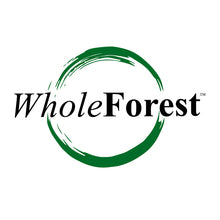Conceptualizing Carbon-Negative Products
Whole Forest produces carbon negative wood products. Our customers are motivated to take action towards reducing climate change, so we offer them a large reduction in their carbon footprint through a carbon offset based on the carbon emissions prevented by bringing additional forests under long-term conservation. Each purchase allows the business to expand its area of conservation based on the financial return to the forest generated by the product sale. Whole Forest not only transfers the carbon benefit to our clients, but we can quantify the number of tons of carbon a purchase has helped us achieve.

Globally, buildings contribute 40% of carbon emissions leading to climate change. Green building, estimated as 15% of the US construction market, is focused on reducing carbon emissions by reducing operating energies, such as heating, cooling, and powering electrical appliances. However, another large source of emissions is the embodied energy from the mining, manufacturing and transporting of building materials, and the construction of the building. Tropical deforestation alone contributes 15% of global carbon emissions. Once a building is built, you can’t change the embodied energy, which can be more than ten times the annual operating energy. By sourcing Whole Forest, a green construction project can offset a large part of the embodied energy in both new buildings and in renovation projects. Whole Forest is piloting this concept.

Preliminary analysis suggests that a new home construction project could offset close to 100% of its embodied energy by sourcing Whole Forest flooring. The table above shows a preliminary analysis of the potential impact of Whole Forest carbon offsets on the embodied energy of a new home. This is based on a Swedish study of embodied energy in new construction of houses with a concrete frame or a wood frame.



